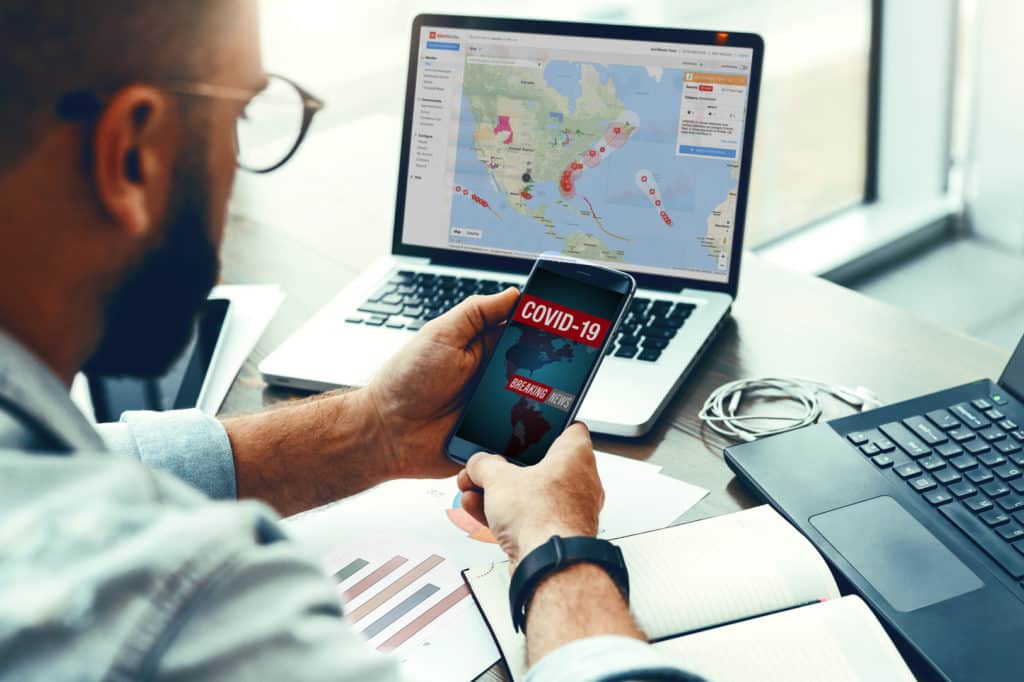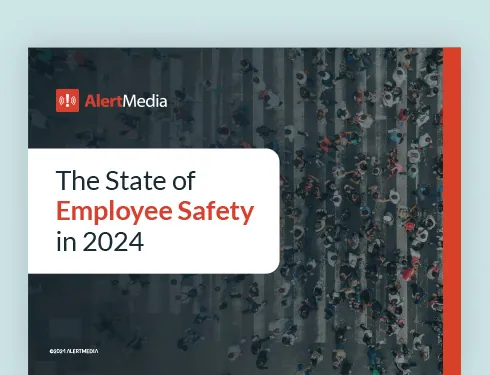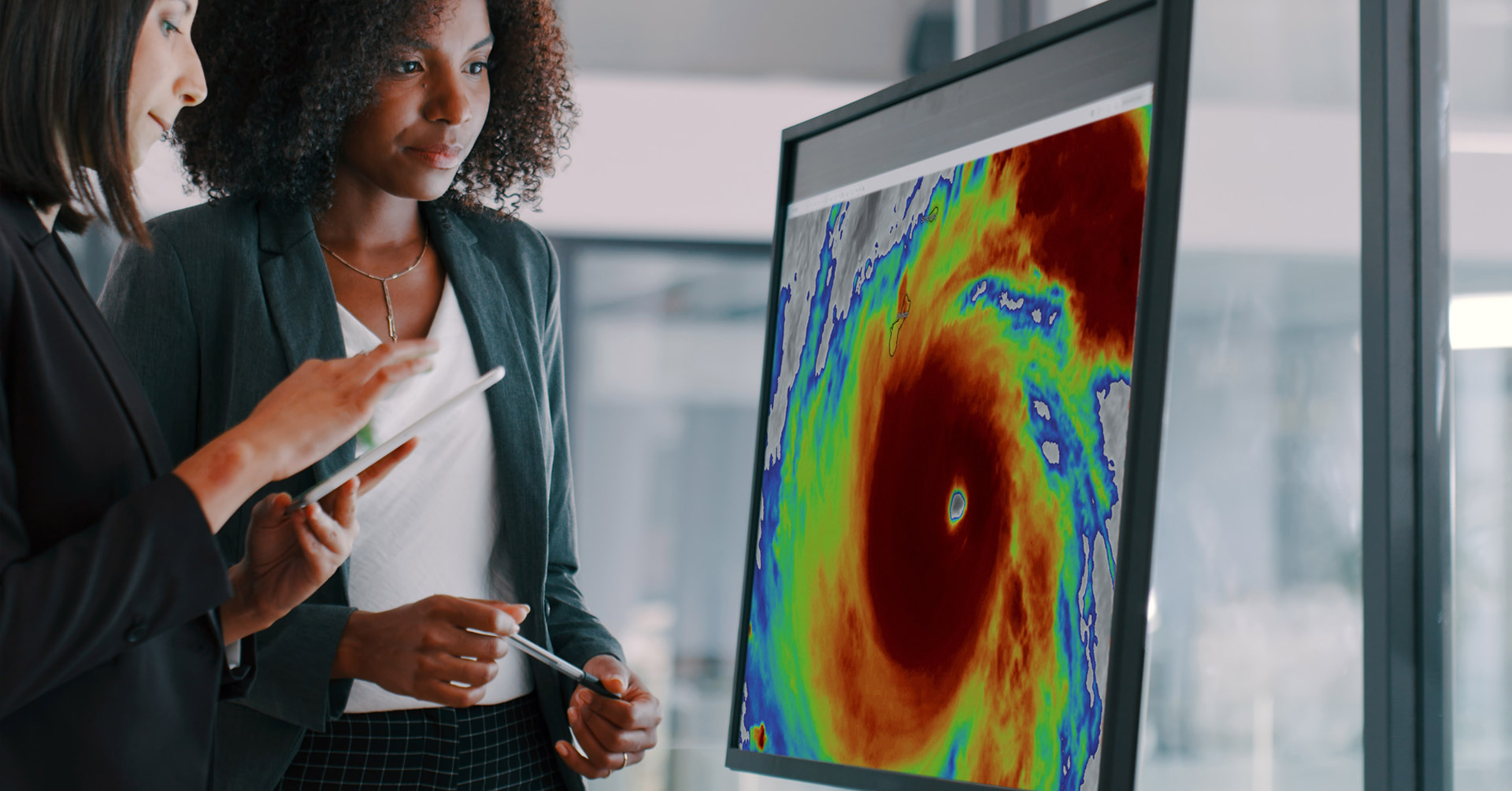
Preparing for Hurricane Season During a Pandemic
The COVID-19 Pandemic is all we think about these days, but there are other threats—such as hurricane season—that we need to keep in mind. Follow the four steps in this article to prepare your organization for this uniquely challenging hurricane season.

The pandemic has a certain way of putting things in perspective. Worries that seemed so important just a few months ago seem trivial today. Businesses have been forced to conjure up a new (and all too real) meaning of the word “resiliency.”
But as companies start to settle into the new normal, they must acknowledge another reality. Some of the concerns that generated the most anxiety and preparation a year ago are still relevant today—and must still be addressed. Life goes on in the midst of the pandemic, and organizations need to make sure they are not caught flat-footed by the yearly threats that seem less important in the present circumstances.
One of those threats? Hurricane season. Every year around this time, companies start to review their hurricane plans and protocols, looking for minor tweaks and improvements to make things go a bit more smoothly than the year before.
The problem is, this isn’t just any hurricane season. The pandemic will make it more tempting to push hurricane preparedness to the wayside, when in reality: the pandemic will make hurricane season even more difficult to prepare for than past years.
An Unprecedented Hurricane Season
At this point, all signs point to one thing: this will be a hurricane season like no other.
“Above average” forecasts
Even without taking into account the pandemic, forecasters predict an abnormally severe season. Forecasters from Colorado State University, who release their greatly-anticipated hurricane season forecast every year around this time, predict that this season will be almost 50% more severe than the average season.
The average hurricane season only has a 52% chance of a major hurricane hitting the continental U.S. coastline. This year, though, they forecast four major hurricanes. The typical season has 12 tropical storms; this year they forecast 16 tropical storms. By every measure, this looks to be an above average hurricane season.
Sheltering during a pandemic
When you take into account the pandemic, the situation is even more uncertain. In past years, major hurricanes have forced evacuations into stadiums and other mass shelters. That may no longer be safe, given the social distancing measures that COVID-19 has made necessary. At the very least, the pandemic will likely change the way that cities approach mass sheltering. Residents outside the storm surge zone may be asked to shelter at home. Those who are forced to evacuate to mass shelters will likely need personal protective equipment, like face masks.
There are also reasons to believe that certain cities might be more at risk than others. Typically, major hurricanes cause mass movement of refugees into inland cities. In 2005, for example, during Hurricane Katrina, evacuees first fled to Houston where the Astrodome was being used as a mass shelter—but then Hurricane Rita came and thousands were displaced again to Austin. In these inland cities, mass influxes of people will bring with them the increased potential for an outbreak. Businesses will need to plan to revert to “stage one” pandemic measures like shelter-in-place, until the threat subsides.
Overwhelmed response systems
The pandemic is already putting a tremendous strain on the typical response systems—disaster relief, healthcare, and government aid. Many hospitals are already at or near capacity. The economy is already reeling. A major hurricane has the potential to wreak even more havoc than in past years.
This could put even more responsibility on businesses to pick up the slack. During Hurricane Harvey, for example, H.E.B. (a regional grocery chain) went to great lengths to take care of its local communities during the crisis—deploying mobile kitchens and other disaster response units to provide emergency relief. This type of response from businesses will be all the more important this hurricane season.
Preparing for the Unprecedented
None of these are reasons to panic or overreact. At the end of the day, hurricanes are foreseeable threats with established responses. But these are reasons to prepare accordingly. If anything, the pandemic simply means that we will need to change the way we prepare for this hurricane season—and the way we respond when hurricanes do come.
There are many obstacles for businesses when it comes to preparing for this year’s hurricane season: A dispersed workforce. The dueling threats of the pandemic and hurricane season. Less financial flexibility. In this article, we will discuss the four biggest challenges of preparing for this year’s hurricane season—and their solutions.
1) Monitoring the storm
The first step in effective hurricane preparedness and response is to listen to the experts and stay up-to-date on the latest forecasts. With today’s forecasting technology, we often know when a major storm is approaching long before it makes landfall—sometimes upwards of a week. This is invaluable time for your business to take the necessary precautions and communicate with your employees about what lies ahead.
Typically, when a major hurricane is on the forecast, it fills the airwaves nationally. Even days in advance, it will be on the front page of most news outlets. Even in areas that likely won’t be hit, updates on the progression of the storm are commonplace news items. In short, it’s hard to miss hurricane news.
During the pandemic, however, this cannot be taken for granted. For one, COVID-19 hogs airspace—and rightfully so. The pandemic produces new updates seemingly every hour, and our country’s leaders in politics, business, and medicine have difficult decisions to make over the coming months. It is not that hurricanes will not be covered, but they will very likely be sharing coverage with COVID-19—which can dilute the impact of critical updates.
But perhaps more importantly, your company will have less bandwidth to monitor things like hurricanes. You have likely already felt this frustration in a hundred other areas of your business operations.
However, this combination—shared media coverage with COVID-19 and decreased bandwidth—can prove dangerous when employee safety is at play. You have a duty of care to keep your people safe from hurricanes, and every day counts. Your hurricane monitoring needs to be up to the task.
Solution: Implement a threat monitoring system
The best solution to this problem is a system dedicated to doing exactly what your company may not have the bandwidth to do adequately—monitor the threat as it emerges and unfolds. A threat monitoring system, like AlertMedia’s, does exactly that. It uses real-time data from thousands of trusted sources and analysts around the globe to provide you relevant information on all different types of current threats, including hurricanes.
Best of all, a threat monitoring system will proactively warn you if a hurricane emerges that could impact your people or locations. This means you don’t need to worry about missing news of a hurricane that is approaching until time is running short. By doing the heavy lifting for you, a threat monitoring system will give you the essential information about hurricanes when you need it, freeing you up to handle your many other pressing responsibilities.
2) Determining your company’s response
Once a hurricane is on the forecast, it is time to gather the key stakeholders and determine your company’s response. In a pre-pandemic physical workspace, this was likely a matter of calling a meeting—in addition to the many other informal conversations that accompany company-wide courses of action like a hurricane response.
But in a remote workplace (whether it is fully or partially remote), this process becomes much more difficult. No more “calling everyone into the conference room”—or walking over to someone’s desk to share the latest news.
During a pandemic, it’s just as important as ever for your organization to come up with an effective plan for how to deal with a hurricane as quickly and decisively as possible. But it will be far more difficult.
Solution: Designate a hurricane response coordinator
While video-conferencing is the obvious candidate for replacing in-person meetings, that is not enough. You also need to designate a person to serve as the dedicated hurricane response coordinator. This person will have several responsibilities:
- Follow your company’s threat monitoring system for hurricane news and updates
- Participate in your organization’s COVID-19 task force meetings for the duration of hurricane season (if applicable)
- Communicate with leadership when a hurricane threatens your people or assets
- Make sure all relevant stakeholders are informed of the threat in a timely manner
- Communicate response measures to employees once decisions are made
In other words, this person will be the glue behind your organization’s hurricane response. In the midst of the pandemic, hurricanes will not be on the top of anyone’s list of concerns unless you tell them it should be. Dedicating one person to take on that role will make sure your company is on top of its response—and no one is left out of the loop.
Your hurricane response coordinator should also have the ability to call quick meetings with your key decision-makers if necessary. The best way to accomplish this is by using an emergency communication system with conference call capabilities—so that your coordinator can get everyone together for a quick conversation without having to set up a meeting time or dial everyone individually.
3) Figuring out who is at risk
Once you have decided on a course of action, it is time to reach out to those who are at risk. The substance of this communication will be different now that many or all of your employees are remote. Instead of communicating office closures, you will likely need to communicate:
- Precautions to take as the storm approaches
- How to safely shelter in your home when it hits
- When to expect the hurricane to begin
- What areas will be affected
- Whether to evacuate
These are critical messages for you to communicate with your people to keep them safe and informed. But before you start sending information, you need to determine: who is at risk?
This was a fairly simple matter, pre-pandemic. All it took was looking at the forecast, determining which office locations might be affected, and communicating with those employees. Now, many employees are not living in the city of their home office. During the quarantine, many people have gone to stay with family and are working remotely—or have found themselves stuck away from home due to travel restrictions.
What this means is that you cannot use office affiliations as a proxy for employee location. It simply is not a safe assumption anymore. In fact, even if your company never thought you had to worry about hurricanes before (say, because you only had a single office in Chicago). Well, now you do—unless you know for sure that every one of your employees is still working from Chicago.
The uncertainty that comes with the pandemic extends to your employee’s locations. You may know that a hurricane is headed for the east coast, but do you know which of your employees may be impacted by that?
Solution: Utilize geofencing and real-time location data
The answer is to take advantage of real-time location data. Threat monitoring systems like AlertMedia use GPS to track the real-time location of your employees, so the system can identify who is impacted by a given threat—even if they are 300 miles from their office location, or where they’re “supposed” to be.
This allows you to skip the step entirely of determining who is impacted, because the threat monitoring system will do that for you. You can simply specify that you want your message to go out to everyone impacted by the specific threat, and that is who will receive the message. Alternatively, you can use geo-fencing to circle an area on an interactive map and send your message to everyone in that area. This can be helpful if you want to cast a wider or narrower net than those people the threat monitoring system currently identifies as at risk.
Either way, using real-time location data ensures that your message gets to the right people—all the right people. This is more difficult, but just as important, during this pandemic.
4) Communicating your plan
The final step in your hurricane response plan is to put it into action, by communicating with your employees. As mentioned before, this is critical communication. It needs to be clear, precise, and received as quickly as possible.
In past years, you were likely able to communicate much of the relevant information in person—likely supplemented by an informational email. Today, however, that won’t cut it. Calling an all-employee meeting is not an option.
Sending a standalone mass email is not an option either. Employees’ inboxes are flooded during this pandemic, and this is a message they cannot afford to miss. Plus, a mass email does not allow employees to respond with questions or concerns—which are made all the more necessary when they are physically cut off from their fellow employees.
Solution: Use a multi-channel, mass communication system
The solution to this problem is to implement a modern mass communication system that can streamline your communication, make sure every message is received, and create the opportunity for dialogue and employee responses. By sending your message over multiple channels—like SMS, email, and voice—you make sure that no one misses the message.
Plus, a solution like AlertMedia will bring your emergency communication and your threat monitoring into one system—meaning you can send the message from the same map where you can see the storm approaching, read the threat analysis, and exchange additional messages with employees who respond. An emergency notification system brings every stage of communication under one roof.
It is hard to bring ourselves to plan for anything other than the next stage of the pandemic these days. But the reality is, companies must do so—or risk getting caught off guard and having two major disruptions to business continuity and threats to employee safety instead of one. By taking the steps described in this article, however, you can equip your organization to take hurricane season in stride. You can ensure that your key decision-makers are able to focus on what is most important right now: keeping your organization running and your people safe in the midst of the pandemic.




